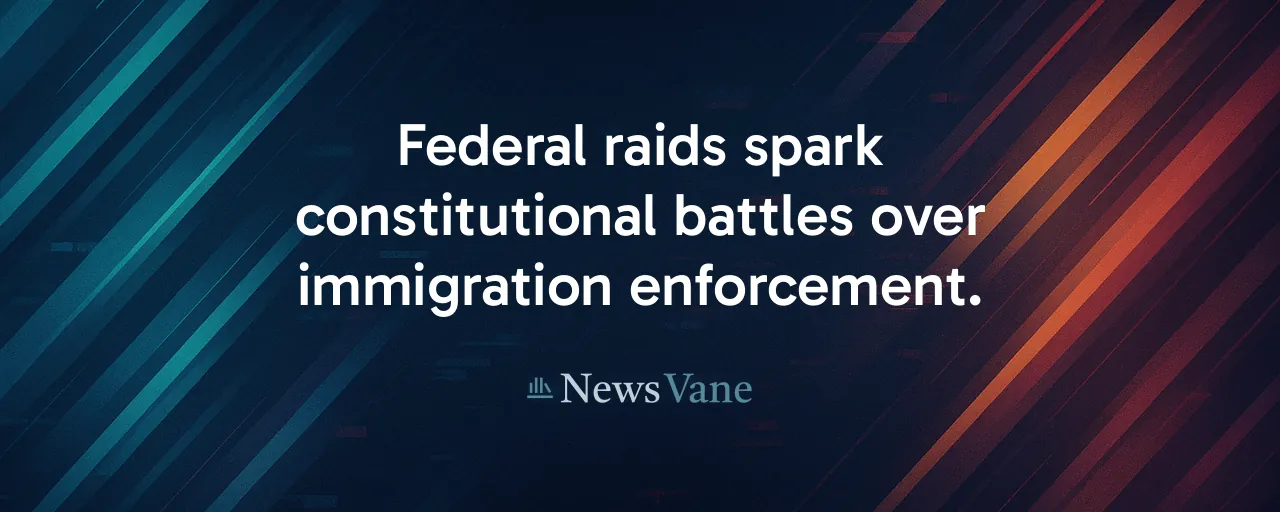A City on Edge
Los Angeles residents woke to a wave of federal immigration raids in June 2025, as masked agents from Immigration and Customs Enforcement (ICE) and Customs and Border Protection (CBP) swept through neighborhoods. The operations, targeting undocumented immigrants, have ignited a firestorm of legal challenges and community unrest. A class-action lawsuit, Vasquez Perdomo et al. v. Noem et al., filed on June 20, seeks to halt these actions, alleging widespread constitutional violations. California Attorney General Rob Bonta, leading a coalition of 19 states, filed an amicus brief on July 7, arguing the raids harm public safety and local economies.
The sweeps, part of a broader Trump administration policy to ramp up deportations, have detained over 1,600 people in two weeks. The tactics used, including suspicion-less stops and racial profiling, have drawn sharp criticism from plaintiffs, including the ACLU of Southern California. Beyond the legal fray, the raids have left communities grappling with fear, disrupted businesses, and strained trust in law enforcement. The issue demands a closer look at how enforcement balances security with civil liberties.
Legal Fault Lines
At the heart of the lawsuit lies the Fourth Amendment, which protects against unreasonable searches and seizures. Plaintiffs argue that ICE and CBP agents have conducted stops without individualized reasonable suspicion, often relying on racial profiling. Affidavits describe U.S. citizens wrongfully detained and families separated without warrants. The multistate amicus brief cites economic losses and public health risks, noting that fear of detention keeps people from hospitals and schools.
Federal courts have long upheld constitutional limits on immigration enforcement. A 2019 settlement in United States v. California and a 2020 Ninth Circuit ruling in City & County of San Francisco v. Trump curbed federal overreach in sanctuary jurisdictions. These precedents suggest that broad, suspicion-less sweeps may not withstand scrutiny. The current case could clarify the scope of federal authority, especially in states resisting cooperation with ICE.
Economic and Social Ripples
The raids' fallout extends beyond courtrooms. Los Angeles County, home to roughly one million undocumented residents, relies heavily on their labor in agriculture, construction, and hospitality. Studies show that aggressive enforcement reduces consumer spending and tax revenues, with short-term GDP declines in targeted areas. Businesses face higher compliance costs, while workers avoid public spaces, leading to labor shortages.
Socially, the impact is profound. Peer-reviewed research links raids to lower crime-reporting rates among Latino communities, as fear of deportation deters cooperation with police. School attendance drops, and mental health stress rises. Some argue the visible presence of federal agents reassures neighborhoods plagued by crime, highlighting the complex trade-offs between enforcement and community trust.
A Tangled History
Large-scale immigration enforcement is not new. In 1954, Operation Wetback deported 300,000 people, often without due process, a policy President Trump referenced during his campaign. California has pushed back for decades, with measures like the LAPD's Special Order 40 in the 1980s to limit immigration inquiries and foster community policing. More recently, the state's Department of Justice secured injunctions against federal attempts to penalize sanctuary policies between 2021 and 2024.
Today's raids reflect a sharp escalation. Federal data shows a 50 percent drop in border apprehensions since the operations began, which supporters credit to tougher enforcement. Critics, however, point to the high cost, averaging $12,500 per apprehension, and the risk of misidentifying citizens. The tension underscores a recurring challenge: aligning enforcement with constitutional and practical realities.
Bridging the Divide
Amid the debate, areas of compromise emerge. Scholars advocate for targeted, intelligence-led operations over broad dragnets, noting they yield fewer civil rights complaints. Proposals include body-camera mandates for agents and independent audits to ensure transparency. Narrowing arrests to those with serious felony convictions could reduce collateral detentions, while state-federal task forces might improve coordination without compromising sensitive locations like schools or hospitals.
Pilot programs for work permits or humanitarian visas, paired with stronger employer verification, could address unauthorized hiring while supporting local economies. These ideas aim to balance public safety with civil liberties, offering a framework for reform that respects both enforcement goals and community needs.
Looking Ahead
The Vasquez Perdomo case is a pivotal moment for Los Angeles and beyond. Its outcome could reshape how federal and state governments navigate immigration enforcement, with ripple effects on economies, communities, and constitutional protections. For now, residents and businesses brace for uncertainty, caught between federal priorities and local realities.
Resolving this issue requires precise solutions. Clear guidelines, transparent oversight, and respect for due process can rebuild trust while addressing legitimate security concerns. The challenge lies in crafting policies that uphold the law while maintaining social cohesion.
As courts weigh the evidence, the nation watches. Los Angeles, a city built on diversity and resilience, stands at a crossroads. The path forward hinges on finding common ground, where safety and dignity coexist, and where enforcement respects the principles that define a free society.
